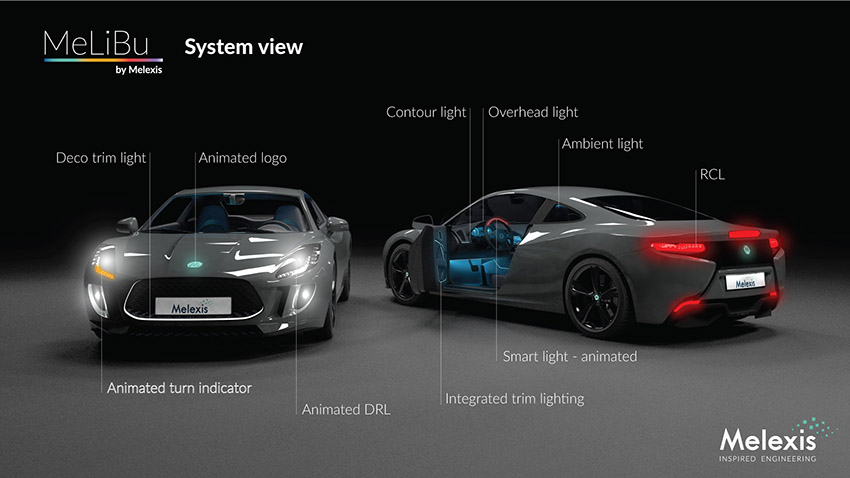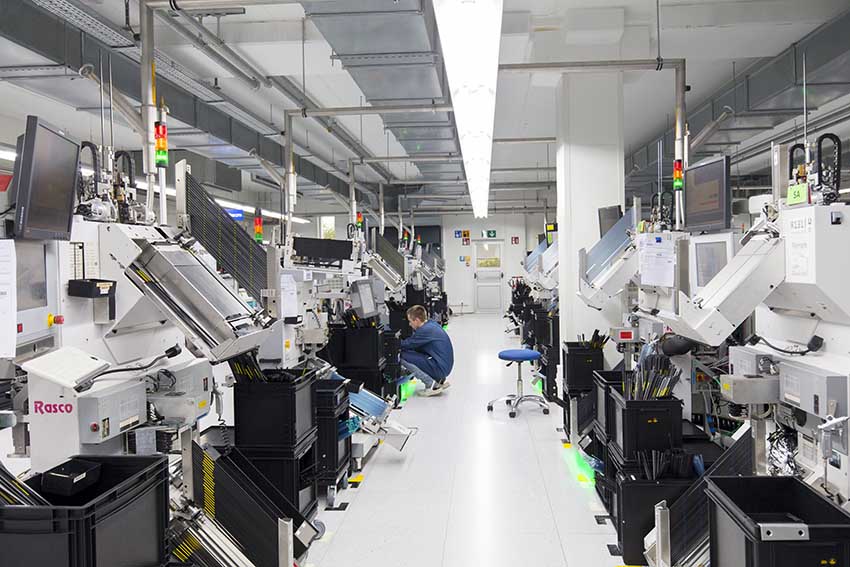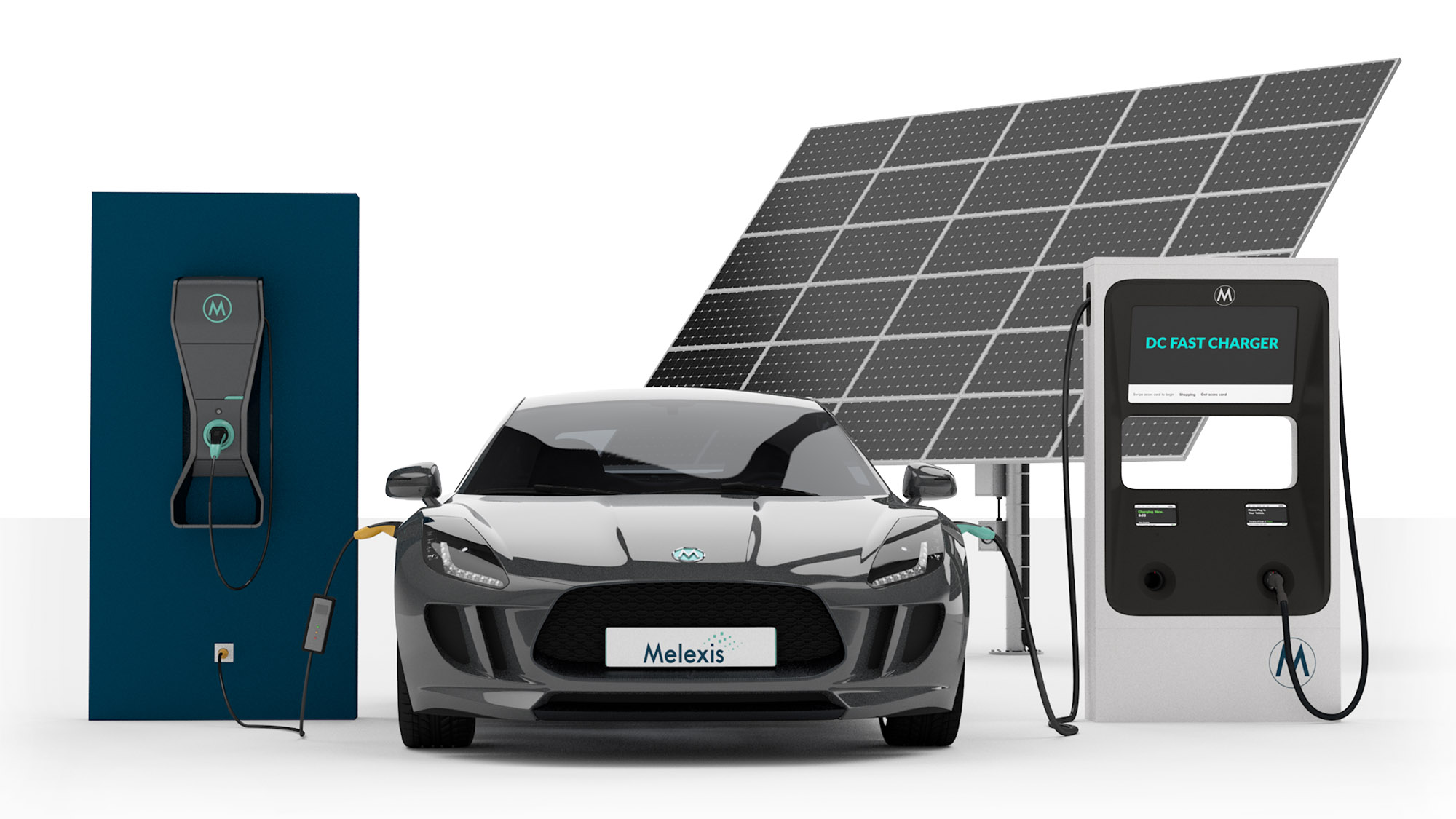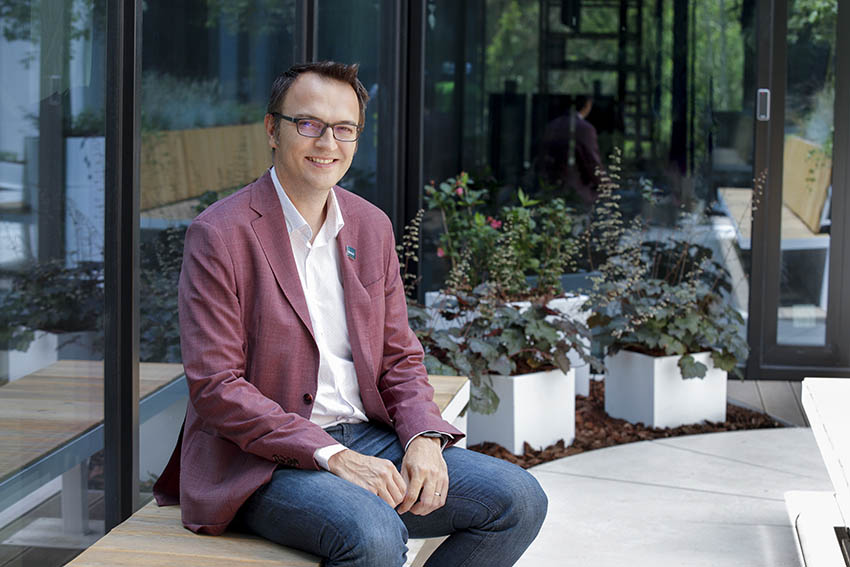Combining a passion for technology with truly inspired engineering, Melexis designs, develops and delivers innovative micro-electronic solutions that enable designers to turn ideas into applications that support the best imaginable future. The company’s advanced mixed-signal semiconductor sensor and actuator components address the challenges of integrating sensing, driving and communication into next-generation products and systems that improve safety, raise efficiency, support sustainability and enhance comfort.
Melexis is a world leader in automotive semiconductor sensors. Today, on average, every new car produced worldwide contains 13 Melexis chips. Melexis has used its core experience to expand its portfolio of sensors and driver ICs. Now they also meet the needs of smart appliances, home automation, industrial and medical applications.
Melexis is headquartered in Belgium and employs over 1,500 people in 18 locations worldwide. The company is publicly traded on Euronext Brussels (MELE).
Interview with Nicolas Simonne, VP Product Development & Quality at Melexis.
Easy Engineering: What are the main areas of activity of the company?
Nicolas Simonne:
1. DEFINE THE CHIP
We have to make sure the chip fully meets our customers’ needs, so we collect all information on the chip’s functions and operating conditions, such as temperature, current, pressure and more.
2. DESIGN THE CHIP
Our systems architects develop the plan. Blocks are then implemented by a design engineer, using basic elements (transistors, resistors) to build a virtual circuit, the correct functionality of which is verified
using mathematical models. Then the individual blocks are combined, in order to minimize chip area.

3. LAYOUT OF THE CHIP
Our layout engineers arrange the conceptual standard blocks into their physical locations.
4. MANUFACTURING ON SILICON WAFERS (by third party)
Copies of the layout are made on a single silicon wafer, made from pure sand (or silica). In the wafer fab, the layout is then transformed into a working chip, by transferring very fine patterns on the silicon wafer through a photolithographic process.
5. TESTING OF THE WAFERS
Wafer testing, also known as probing, involves testing the chip with tiny needles which electrically connect each chip to the tester.
6. PACKAGING OF THE CHIP (by third party)
Wafers are sawn into individual die and then assembled into the required package. The package’s main function is to protect the delicate silicon chip from its environment, both the chip itself and its electrical connections or bondwire.
7. TESTING OF THE CHIP
Each chip is tested with a similar testing regime as the wafer test (see step 5), but this time at package level to screen out any possible defect that could have occurred during the packaging process. For sensors IC , we are performing state of the art calibration to meet customer applications requirements over a temperature range from -40°C til 160°C .
8. CHIPS ARE EVERYWHERE
Every chip has its own story to live. Melexis makes many chips to measure the real world and report accurately what is happening to a controller.
E.E: What’s the news about new products?
N.S: We believe science, technology and innovation are the answer to a lot of our societal problems. So we keep innovating and developing new products. This year alone, up till today we launched 14 new products, services and/or features. Needless to say that these products meet the challenges our customers are facing.
E.E: What are the ranges of products?
N.S: We create innovative micro-electronic solutions for the best imaginable future: magnetic and inductive position sensors, current sensors, embedded and smart drivers, LED drivers, optical sensors, Infrared temperature sensors and pressure sensors ICs. We shipped 1.3 billion of these ICs worldwide in 2020.
If you translate this to markets:
In automotive we are very active in electrification, assisted and autonomous driving and personalization (Chassis, body & safety systems). In non -automotive markets we are focussing on what we call Smart Life: alternative mobility, robotics, well-being, computing, networking and a carbon-neutral society.
E.E: At what stage is the market where you are currently active?
N.S: There is an increased need for semiconductors. In the COVID world, Semiconductors are needed for online meetings, shopping, gaming, cloud computing, … The demand has increased very fast to reach a very high level and for a very long time. By consequence this market is determined by supply, and at the moment no longer by demand.
E.E: What can you tell us about market trends?
N.S: In the next 10 years, we will experience the shift to more electrification of the car. The hybrid cars will be a bridge between the traditional ICE and the BEV. It will probably take 20 years to have only BEV cars worldwide even if some regions could move much quicker depending on government decisions and incentives.
It is clear that OEMs focus their investments on electrification for the time being. It is the reason why we anticipate limited progress on the ADAS features. The maturity of the driverless car will increase during the next 10 years but their use will be limited to specific applications like a bus commuting on the same road with the same constraints in a park for example (eg. robot taxi).
From a Melexis business point of view, the shift to electric cars is beneficial. The number of opportunities in a traditional powertrain and in an electrified powertrain is similar, while the number of applications related to body, chassis and safety are much larger in a novel electric car. The move to electric cars is therefore beneficial for Melexis.
Alternative mobility (like e-bikes, drones, etc..) is a growing trend which will impact the transport industry. There will be a shift from transport by classical vehicles to alternative, probably driverless, alternatives. In some countries companies are already deploying drone services. (Amazon, Wing and UPS). Of course, these new transport modes will have a beneficial impact on Melexis.
Shared car companies will differentiate themselves by offering different levels of comfort and service. This again will open up a world of possibilities for our ICs.

Mobility is a key element of human behavior, this will not change, although the way we move, will. Alternative ways of mobility will be serviced by Melexis IC products as well. This way we help shape a better, greener and more comfortable future. Mobility is here to stay, but we are going to do it smarter. It will not only be group mobility modes, individual transport will always be at hand, since the need for individual mobility is very unlikely to disappear.
E.E: What are the most innovative products marketed?
N.S: All of our products are high tech, so it’s hard to say which ones are the most innovative. We give the mechanical world around us senses so it can understand what’s going on. Then we translate this registration into a digital signal so the data can be interpreted and used in order to manipulate the mechanical world for the best. That whole complex process, captured on a thing so small as an IC, is quite baffling if you think about it. So, asking us which of our products are the most innovative is like asking us which water is the most wet. They all are.
E.E: What estimations do you have for 2022?
N.S: We expect the hunger for ICs won’t decrease. In non-automotive of course, but for sure in automotive as well. The electrification trend combined with chassis-body-safety growth will continue in 2022. Not only in high-end vehicles but also in lower-end EVs. This electrification trend will dive our growth.



